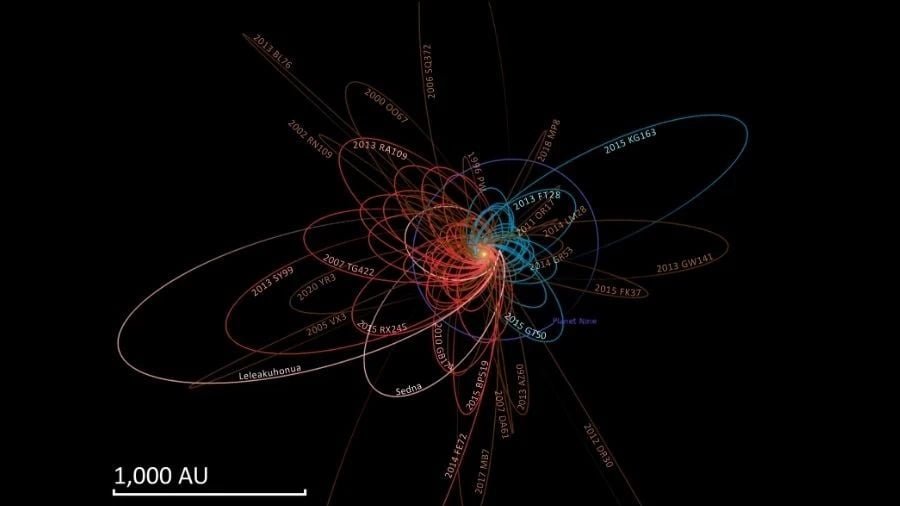Is There an Earth-Like Planet Hidden in the Outer Solar System?
The intriguing question Is there an Earth-like planet concealed within the outer realms of our solar system? has ignited the curiosity of astronomers and planetary scientists as they delve into the mysteries of the Kuiper Belt and the peculiar behaviors of trans-Neptunian objects (TNOs). The quest to understand the distant reaches of our cosmic neighborhood has led to two compelling theories – one suggesting the existence of a hidden Earth-like world and the other proposing a massive planet, often referred to as “Planet Nine.”
In the vast Kuiper Belt, a region extending far beyond the orbit of Neptune, a peculiar dance of icy rocks and dwarf planets unfolds. These objects, known as TNOs, reside at extreme distances from the Sun, far from the comforting warmth of its light. Recent years have witnessed the discovery of a multitude of TNOs, enabling scientists to uncover intriguing patterns in their movements. The most striking revelation is the clustering behavior exhibited by some of these TNOs, hinting at gravitational influences exerted by an unseen celestial body.
The idea of a hidden massive planet lurking within the Kuiper Belt, Planet Nine, was first proposed by Caltech astronomers Mike Brown and Konstantin Batygin in 2016. This theoretical planet, believed to be around 6.3 times the mass of Earth, orbits at a distance exceeding 460 astronomical units from the Sun, where one astronomical unit is the average Earth-Sun distance. However, another theory has emerged, offering an alternative perspective.
Patryk Sofia Lykawka of Kindai University in Japan and Takashi Ito of the National Astronomical Observatory of Japan have proposed a different explanation. They envision a more modest Earth-like world, distinct from the massive Planet Nine, located much closer to our solar system on a tilted orbit. This hypothetical Earth-like planet would be no greater than three times the mass of our home planet, situated within 500 astronomical units from the Sun, and inclined at an angle of 30 degrees relative to the plane of the solar system.
“We predict the existence of an Earth-like planet and several trans-Neptunian objects on peculiar orbits in the outer solar system, which can serve as observationally testable signatures of the putative planet’s perturbations,” write Lykawka and Ito in their study published in The Astronomical Journal. This theory not only offers a fresh perspective but also provides observable indicators to test the presence of the hypothetical planet.

Intriguingly, the existence of this Earth-like planet may explain several mysteries within the Kuiper Belt. TNOs with orbits beyond Neptune’s gravitational reach, high-inclination objects, and even the behavior of some extreme objects with peculiar orbits could all be elucidated by the gravitational influence of this hypothetical world. For instance, the dwarf planet Sedna, with its exceptionally elongated orbit, could find a plausible explanation in the presence of such a planet.
The implications of these studies extend beyond mere curiosity about our solar system’s outer fringes. They present an opportunity to shed light on the processes of planet formation and evolution in the trans-Jovian region. More detailed knowledge of the orbital structure within the distant Kuiper Belt has the potential to either confirm or dismiss the existence of this hidden Earth-like planet, offering a tantalizing prospect for further astronomical exploration.
The search for hidden worlds within our solar system has been a tantalizing endeavor, capturing the imaginations of astronomers and sparking a renewed interest in the enigmatic outer reaches of our cosmic neighborhood. As we continue to explore and understand the intricacies of the Kuiper Belt and the trans-Neptunian objects within it, we are one step closer to unraveling the secrets of our celestial backyard. The quest for an Earth-like planet hidden in the outer solar system has just begun, and it may hold profound insights into the formation and evolution of planets in our cosmos.










